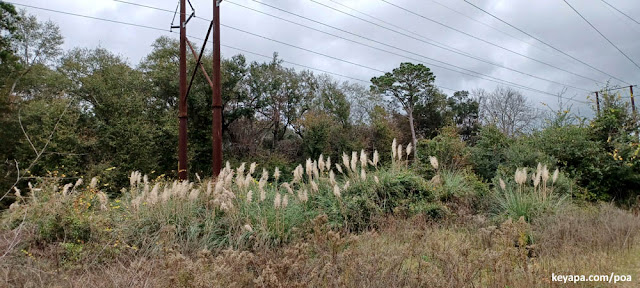 |
| Escaped Cortaderia selloana near Tanger 2 Outlets in December, 2021 |
When I visited the Tanger Outlets in Hilton Head, South Carolina a few days back, I noticed the presence of "escaped" ornamental Cortaderia selloana (pampasgrass) along the roadsides. This species is heavily used in the southeastern states, and the fact that some may have escaped from cultivation was not entirely a surprise. One stand in particular southeast of the outlet had a dense cluster of the invasive.
When I used Google Street View to look at the same area in the past (coordinates 32.237168,-80.8178924), I did not anticipate seeing this same stand years back, but imagine my surprise when I went all the way back to 2013 and the same exact cluster of C. selloana seems to have been in the same spot!
 |
| The same stand of Cortaderia selloana in 2013 |
This seeming stability in pampas grass is interesting because like many grasses it has rhizomes which can aggressively push its way into new territory. Perhaps in this case the surrounding vegetation or environment is not conducive to its spread, or perhaps the last 7 or so years is not enough time to see major changes. When compared to cogongrass especially, such slow expansion is curious, and it would be interesting to find more instances of other escaped ornamentals and see whether this slow rate of expansion is normal.

No comments:
Post a Comment